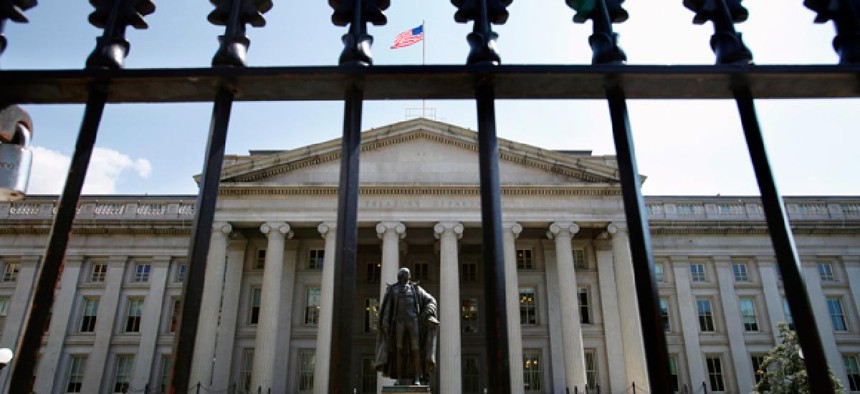There’s Nothing to Fear But the Debt Itself
Federal interest payments are projected to grow faster over the next decade than any other broad category of expenditures.
Quick, which segment of federal spending will grow fastest from 2015 through 2021? Did you guess Medicare? If you did, you’d be wrong.
It’s an underappreciated fact that a significant contributor to the ballooning debt is ... the debt itself. Federal interest payments are projected to grow faster over the next decade than any other broad category of expenditures, outpacing spending on Medicare, Medicaid, and Social Security. Even a small, sudden shift in the interest rate on government debt could inflate deficits by trillions of dollars over the next decade.

It’s “the issue that concerns me more than anything else,” said former longtime Senate Budget Committee staffer William Hoagland at a recent panel on the budget. “It’s the level of debt as a combination of interest rates plus the level of accumulated debt that’s really explosive in the out years,” he said at the panel hosted by the Bipartisan Policy Committee, where he now works as a senior vice president.

Lawmakers and experts are rightly focused on entitlement reform because spending for those programs is so huge. Interest spending is projected to grow quickly in the near term, but it still makes up only a small portion of the debt. That could grow quickly, though, according to the nonpartisan Congressional Budget Office.
Interest rates fluctuate in response to a variety of factors, including expected inflation, Federal Reserve policy, and domestic and global economic strength. But if economists polled in the October and February Blue Chip Economic Indicators surveys are right about their rate predictions, it would mean that the CBO—Congress’s budget scorekeeper—is underestimating the size of the 10-year budget deficit to the tune of $1.1 trillion.
In other words, the upward shift in interest rates would eradicate most of the savings from the roughly $1.2 trillion in painful spending cuts implemented under sequestration over the next decade. Lawmakers in both parties are currently trying to reduce deficits over by about $4 trillion in roughly that time frame, too. If interest rates returned to 1980s levels, CBO says deficits would swell by $6.2 trillion instead.
Over the long term, interest spending will become an increasingly large burden unless something is done about the debt broadly. And the Treasury Department has a graph in its “Citizen's Guide to the Fiscal Year 2012” that shows the potential scale of the problem. (It should be noted that economic predictions even 10 years out are notoriously subject to error. Longer-term projections like the one below are even harder to get right, but they can still prove instructive in understanding the makeup and path of the debt.)




